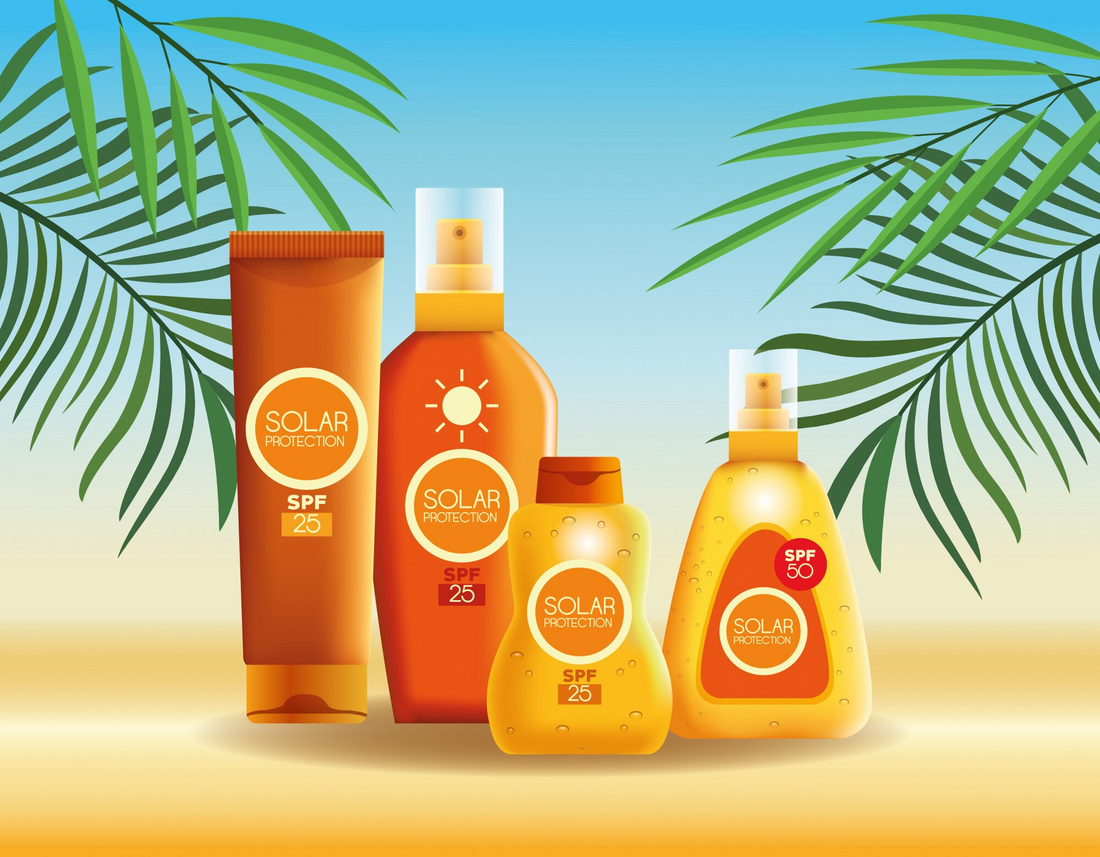
Which SPF should you choose to best protect your skin?
Share
In summer – and all year round – sun protection is essential for healthy, youthful-looking skin. While a tan may seem like the hallmark of a perfect vacation, it's important to remember that UV radiation has serious effects on both our health and appearance.
Before choosing a sunscreen with SPF, it’s worth understanding how ultraviolet (UV) radiation actually works.
Types of UV Radiation
UV radiation emitted by the sun is divided into three types:
- UVC – Fortunately, we don’t need to worry about this one. It’s completely absorbed by the Earth’s atmosphere and doesn’t reach the ground.
- UVB – Makes up about 5% of the UV radiation that gets through the atmosphere. It does not penetrate glass. UVB rays are responsible for sunburn, tanning, and damage to the outer layer of the skin.
- UVA – Accounts for 95% of the UV radiation that reaches the Earth's surface. It penetrates clouds, glass, and deeper layers of the skin. UVA rays cause premature aging, wrinkles, hyperpigmentation, and increased risk of skin cancer.
An easy way to remember this:
UVB - Burning, UVA - Aging

What does SPF really mean?
SPF (Sun Protection Factor) indicates the level of protection against UVB rays. For example, SPF 30 means your skin is 30 times more protected from redness and sunburn compared to no protection at all. But here’s the catch: SPF doesn’t tell you anything about UVA protection!
That’s why it's essential to choose sunscreens that are clearly marked with:
- Broad Spectrum – protects against both UVA and UVB,
- UVA in a circle – a European standard label,
- PA+ to PA++++ – a common Asian rating; the more pluses, the higher the UVA protection.
Why is UVA protection so important?
UVA rays reach deep into the skin and cause invisible damage that adds up over time. This can lead to:
- premature aging,
- wrinkles and fine lines,
- loss of skin firmness,
- persistent discoloration,
- increased risk of skin cancer.
One of the most powerful visual examples of UVA damage is the famous photo of a truck driver who was exposed to sunlight through the window on the left side of his face for years. The difference between the two sides is striking and shows how even indirect or indoor exposure to UVA can leave a lasting mark.

What about windows?
- Regular glass windows block UVB, but still let in a significant amount of UVA – roughly equivalent to SPF 20-40.
- In a car, the windshield blocks up to 95% of UVA, but side windows only around 70%.
This means you're still exposed to harmful UVA rays – even while driving or sitting by a window – unless you wear proper sun protection!
So, which SPF should you choose?
- For everyday use – SPF 30 is the minimum. Look for a lightweight product with both UVA and UVB protection, especially if you sit near a window or drive often.
- For intense sun exposure (beach, Icelandic summer, outdoor sports) – go for SPF 50+ with broad spectrum protection.
- For children, fair skin, or sensitive skin – always choose the highest possible protection.
Don’t forget to reapply sunscreen every 2–3 hours, especially if you’re sweating, swimming, or using a towel.
In our shop, you’ll find a selection of trusted sunscreens with high UVA and UVB protection – perfect for the Icelandic summer or year-round skincare:
- Nacomi – Moisturizing SPF 50 Day Cream 50 ml
- BasicLab – Light Protective Emulsion SPF50+ - Prevention and Antioxidation 50 ml
Take care of your skin consciously – because prevention is the best form of skincare.
